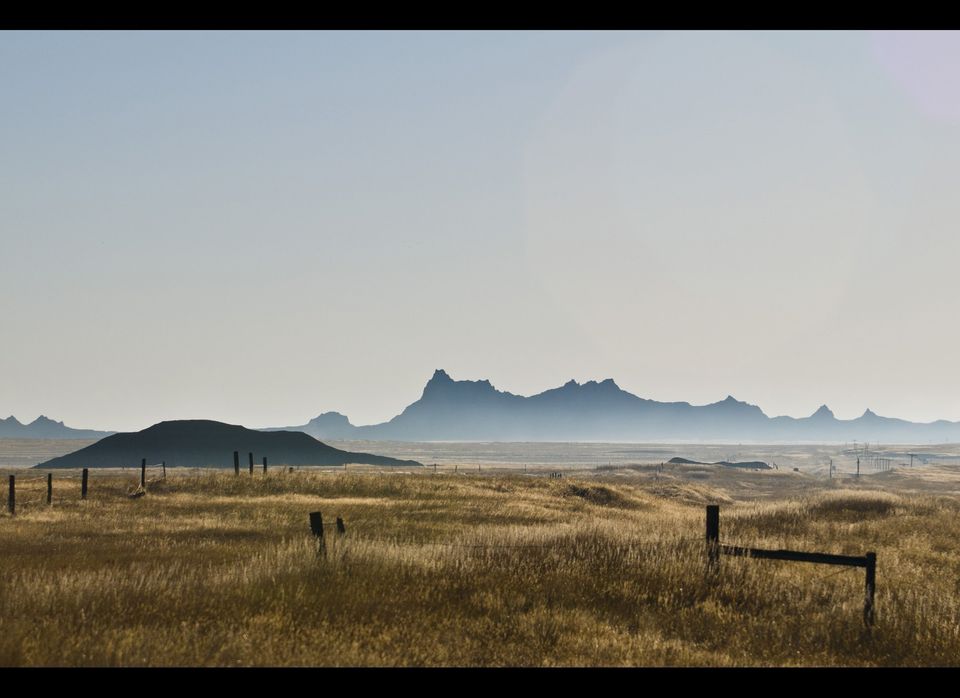
Last year we headed West in search of some great landscapes to photograph. We left Minnesota in the fall, so as we made our way temperatures would remain moderate and the parks, nearing the end of their season, would have decent camping spots. Arriving at the parks mid-week increased our ability to find the perfect spot.
We found out that our good old U.S. of A. has a lot to offer! We should have scheduled more than 3 months. We had only planned one night at each monument and at large national parks only 3-4 nights leaving no time for proper scouting of locations. We had to rely on ranger stations for help in finding the most scenic places.
A huge money saver on this trip was buying an annual park pass; they are $80 and will get you into most Bureau of Land Management areas. This means if the park has "national" in the title you will probably get in with the pass but if it has "state" in the title such as a State Park then you are out of luck.
South Dakota
If you are in the area of the Badlands National Park it is a must see. You drive across the prairie and suddenly you come upon a big scar in the earth. The Badlands is a long and skinny park. Landscape photography is your best bet here.
Wind Cave National Park is situated in and around the Black Hills. This little known National Park has a lot going for it including bison, pronghorn and puma. We arrived shortly after season so the camping spots were plentiful and the elk bugled (i.e. played his nose in a trumpet like fashion) us to sleep at night.
If you happen to arrive on National Park Appreciation Day as we did, you can get a FREE cave tour which was a lot of fun. Cramped quarters in caves make carrying gear difficult. I carry only 1 flash, a TTL cord or some kind or commander unit for the flash (Nikon SU-800 or Pocket Wizard) and my trusty Joby Gorillapod.
Wyoming
Devils Tower National Monument is a large volcanic intrusion of crystallized rock columns sticking out of the earth creating a huge rock monolith. Climbers from around the world come to climb and camp at the top of the tower, which is the size of a football field. We were there in early October and the leaves were changing colors, it was beautiful. Below the tower is a river next to the KOA and in the morning you can get a perfect reflection of the tower as the morning sun lights it up purple to orange, this is the shot.
Bighorn National Forest was a great one-night camping stop between Devils Tower and Yellowstone.
National Forest camping is nice because they often don't get the crowds that the National Parks have, plus you often don't have to deal with entrance fees and you can usually collect firewood with little restriction.
Yellowstone is a huge park and its elevation makes it much colder earlier in the season than surrounding areas, as we found out. Our nights were in the 30's in early October which made camping difficult. There is a lot of thermal activity, geysers, mud-pots, hot springs, and other things that create colorful, interesting and otherworldly landscape images.
California
Yosemite National Park is a picturesque waterfall filled valley between granite cliffs. The cliffs are extensive and the valley is small and narrow. It is extremely popular with tourists and photographers alike, so space becomes an issue in the small valley. It is often difficult to see everything you want to see in a day due to the crowds. It is difficult but with good reason, the waterfalls are beautiful, the hiking is great and the stones are monolithic; it's a very iconic place. Large and popular parks like this make it a good idea to go on a photographic tour if you have limited time and can't find all the hotspots yourself. Yosemite and many other parks offer their own photography tours; you can also find many in the back of Outdoor Photographer or AAA guides.
Death Valley was one of our favorite National Parks, there is so much variety and unlike all the other parks where we were arriving at the tail end of the season, we showed up in Death Valley right at the beginning. With the highest recorded temperature on the western hemisphere of 134 degrees, their season starts in October and runs through the cold months. There are sand dunes, salt flats, Mount Whitney, mosaic marble canyons, ghost towns, rocks that move, mineral colored mountains, desert fauna, flowers, two golf courses and so much more.
Remember, the easiest way to improve your images is to use a tripod or sandbag.
To see more great photography visit HuffPost Exposure.
